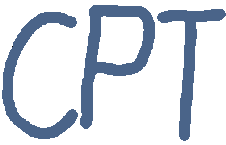
|
Calendar of Physics Talks Vienna
| Rademacher expansion from symplectic symmetries of the Siegel modular form: An $N=4$ counting story |
| Speaker: | Martí Rosselló (IST Lisbon) |
| Abstract: | Single centred 1/4 BPS degeneracies in four-dimensional $N=4$ heterotic string theory are generated by $1/\Phi_{10}$. In this talk, we will demonstrate how its $Sp(2,\mathbb{Z})$ symmetries enable us to develop not only a Rademacher expansion for these degeneracies, but also derive the explicit structure underlying the polar states that feed into the expansion. Our results have important implications for using microscopic data to exactly compute gravity path integrals. |
| Date: | Tue, 30.11.2021 |
| Time: | 14:00 |
| Location: | Zoom: https://tuwien.zoom.us/j/97641048733?pwd=Q2JqOThkeXpUQy9ESit6R1NCZElkdz09 Password: uYTuX81c |
| Contact: | Romain Ruzziconi |
| The geoSMEFT and some applications |
| Speaker: | Tyler Corbett (Niels Bohr Institute) |
| Abstract: | The Standard Model Effective Field Theory (SMEFT) is one of the most promising tools for precision based discoveries at the LHC.
Calculation in the SMEFT are often fraught with inconsistencies in the power counting expansion. The recent geometric reformulation
of the SMEFT (geoSMEFT)allows us to perform calculations at NLO in the SMEFT expansion, and in many cases all orders in the SMEFT expansion.
In this talk I will introduce the basic idea behind effective field theories, discuss the SMEFT and its use for LHC phenomenology, and demonstrate how the geoSMEFT is formulated.
I'll then demonstrate some of the recent applications of the geoSMEFT and discuss how it may help elucidate the theory error associated with the truncation of the SMEFT expansion. |
| Date: | Wed, 01.12.2021 |
| Time: | 11:00 |
| Duration: | 60 min |
| Location: | https://univienna.zoom.us/j/93427906843?pwd=YjhSejdUVW16QjVQYUh5TVNSNFNhQT09 Meeting ID: 934 2790 6843 Passcode: 073703 |
| Contact: | A. Hoang, M. Procura |
| Testing Quantum Electrodynamics in strong fields with Exotic Atoms |
| Speaker: | Prof. Paul Indelicato (Laboratoire Kastler Brossel, UPMC-Sorbonne Université, CNRS, ENS-PSL Research University, Collège de France, Case 74; 4, place Jussieu, F-75005 Paris, France) |
| Abstract: | Comparing high-precision, low-energy experimental results to accurate theoretical values, e.g., in atomic and molecular physics is one of the ways to test the standard model. The accuracy of quantum electrodynamics tests in strong fields with highly-charged ions (HCI) is limited by uncertainties on the nuclear size contribution to transition energies of the heaviest elements. We have shown that using circular Rydberg states in exotic atoms could provide a way to test QED in strong fields, free from nuclear uncertainties. Moreover, the mean-electric field in these systems can be well above the Schwinger limit of spontaneous-pair creation, giving a special role to vacuum polarization. I will present these theoretical results... [full abstract available here: https://indico.cern.ch/event/1098967/] |
| Date: | Wed, 01.12.2021 |
| Time: | 16:00 |
| Duration: | 60 min |
| Location: | Webinar: request zoom link by 30Nov2021 via email martin.simon at oeaw.ac.at |
| Contact: | Prof. Dr. Eberhard Widmann, Dr. Martin Simon |
| How the Immirzi Parameter deforms the SL(2,R) Boundary Charges on the Light Cone |
| Speaker: | Wolfgang Martin Wieland (Vienna) |
| Abstract: | This talk describes how the Barbero--Immirzi parameter deforms the SL(2,R) symmetries on a null surface boundary. Our starting point is the definition of the action and its boundary terms.We introduce the covariant phase space and explain how the Holst term alters the symmetries on a null surface.This alteration only affects the algebra of the edge modes on a cross-section of the null surface boundar,whereas the algebra of the radiative modes is unchanged by the addition of the Barbero--Immirzi parameter.To compute the Poisson brackets explicitly, we work on an auxiliary phase space,where the SL(2,R)symmetries of the boundary fields are manifest.The physical phase space is obtained by imposing both first-class and second-class constraints. All gauge generators are at most quadratic in terms of the fundamental SL(2,R) variables.Finally we discuss various strategies to quantise the system. |
| Date: | Thu, 02.12.2021 |
| Time: | 14:00 |
| Duration: | 60 min |
| Location: | ZOOM https://univienna.zoom.us/j/6540036841?pwd=SytyVkZJZzNyRG9lMm13ejlHeHRRUT09 |
| Contact: | P. Chrusciel, D. Fajman |
| Non-Abelian T-dual of Klebanov-Tseytlin background and its Penrose limits |
| Speaker: | Sourav Roychowdhury (Chennai) |
| Abstract: | In this talk I will discuss Klebanov-Tseytlin background and it’s non-Abelian T-dual geometry. In particular I will show that the T-dual background admits pp-wave geometry in the neighbourhood of appropriate null geodesic. I will make comments on possible dual gauge theory for our pp-wave background. |
| Date: | Thu, 02.12.2021 |
| Time: | 16:30 |
| Duration: | 60 min |
| Location: | https://tuwien.zoom.us/j/95482849369?pwd=SkU2WU5hMVJBQWsyVlFXRlRvQlIvdz09 |
| Contact: | Laura Donnay |
| Towards the ultimate precision of inclusive Vcb |
| Speaker: | Matteo Fael (TTP - KIT, Karlsruhe) |
| Abstract: | Precise determinations of|Vcb|from B factories are crucial for testing the unitarity of the CKM matrix and obtaining accurate predictions of decay processes with flavour changing neutral current.Inclusive semileptonic B decays offer one of the main avenues for such extraction of|Vcb|.In this seminar I will present some recent developments in the theoretical prediction of this class of decays,in particular the calculation performed in perturbative QCD of the third order correction to the partial semileptonic width and the relation between the on-shell mass and the so-called kinetic mass determined to the same order of accuracy.I will also discuss the perspectivesfor a novel extraction of inclusive|Vcb|based on the leptonic invariant mass spectrum,recently measured by the Belle collaboration, which allows to reduce the set of non-perturbative inputs necessary in the theoretical prediction. |
| Date: | Fri, 03.12.2021 |
| Time: | 16:00 |
| Duration: | 60 min |
| Location: | ZOOM https://univienna.zoom.us/j/93427906843?pwd=YjhSejdUVW16QjVQYUh5TVNSNFNhQT09 Meeting ID: 934 2790 6843 Passcode: 073703 |
| Contact: | A. Hoang, M. Procura |
|
